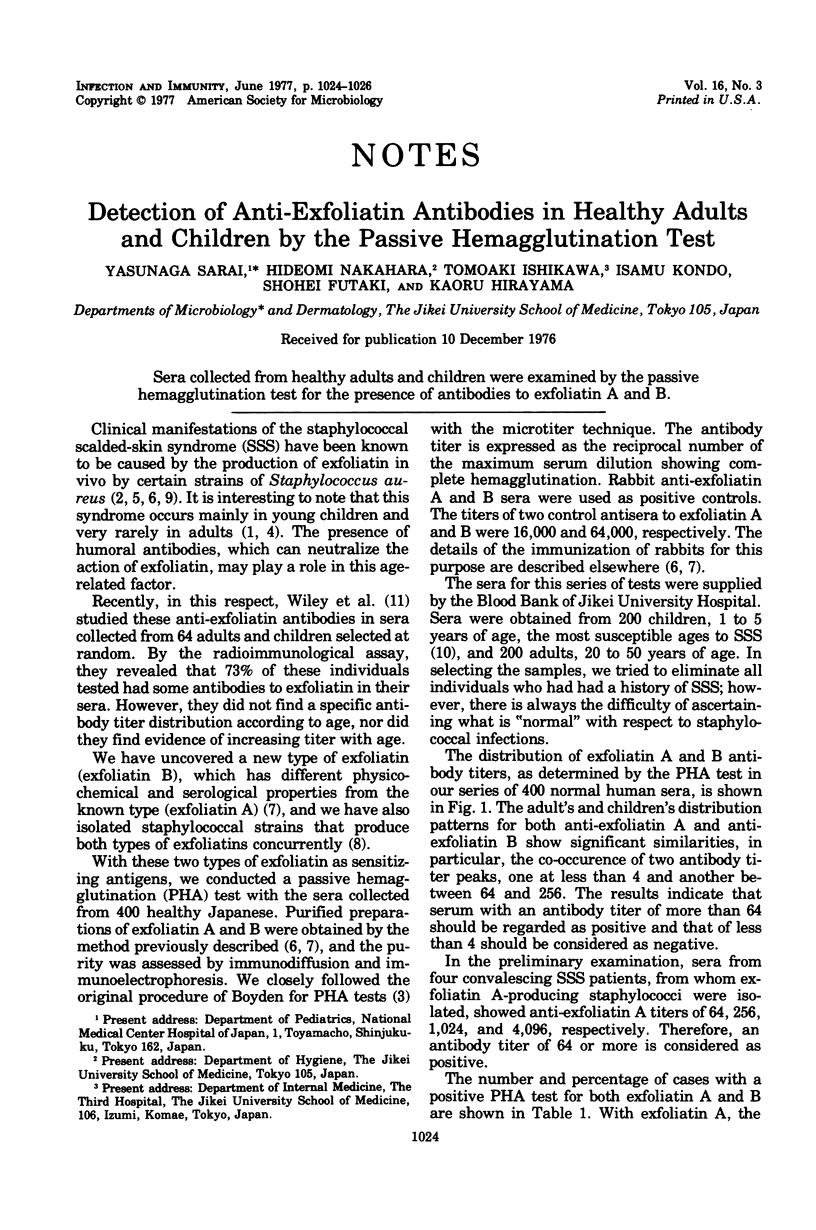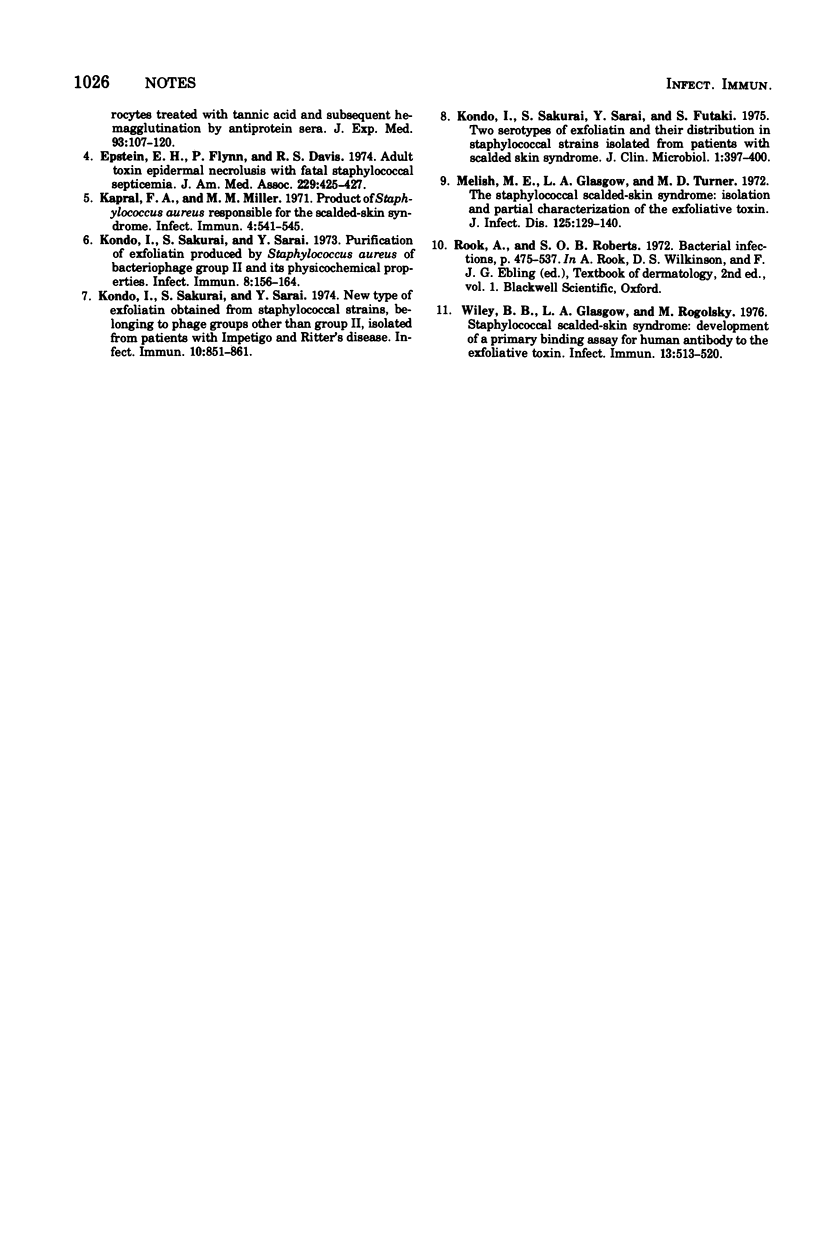Abstract
Sera collected from healthy adults and children were examined by the passive hemagglutination test for the presence of antibodies to exfoliatin A and B.
Full text
PDF


Selected References
These references are in PubMed. This may not be the complete list of references from this article.
- Achten G., de Dobbeleer G., Moriamé N., Gottignies P., Kahn R., Potvliege P. Staphylococcal scalded skin syndrome in an adult. Dermatologica. 1975;151(6):342–348. doi: 10.1159/000251358. [DOI] [PubMed] [Google Scholar]
- Arbuthnott J. P., Kent J., Lyell A., Gemmell C. G. Toxic epidermal necrolysis produced by an extracellular product of Staphylococcus aureus. Br J Dermatol. 1971 Aug;85(2):145–149. doi: 10.1111/j.1365-2133.1971.tb07200.x. [DOI] [PubMed] [Google Scholar]
- Epstein E. H., Jr, Flynn P., Davis R. S. Adult toxic epidermal necrolysis with fatal staphylococcal septicemia. JAMA. 1974 Jul 22;229(4):425–427. [PubMed] [Google Scholar]
- Kapral F. A., Miller M. M. Product of Staphylococcus aureus responsible for the scalded-skin syndrome. Infect Immun. 1971 Nov;4(5):541–545. doi: 10.1128/iai.4.5.541-545.1971. [DOI] [PMC free article] [PubMed] [Google Scholar]
- Kondo I., Sakurai S., Sarai Y., Futaki S. Two serotypes of exfoliatin and their distribution in staphylococcal strains isolated from patients with scalded skin syndrome. J Clin Microbiol. 1975 May;1(5):397–400. doi: 10.1128/jcm.1.5.397-400.1975. [DOI] [PMC free article] [PubMed] [Google Scholar]
- Kondo I., Sakurai S., Sarai Y. New type of exfoliatin obtained from staphylococcal strains, belonging to phage groups other than group II, isolated from patients with impetigo and Ritter's disease. Infect Immun. 1974 Oct;10(4):851–861. doi: 10.1128/iai.10.4.851-861.1974. [DOI] [PMC free article] [PubMed] [Google Scholar]
- Kondo I., Sakurai S., Sarai Y. Purification of exfoliatin produced by Staphylococcus aureus of bacteriophage group 2 and its physicochemical properties. Infect Immun. 1973 Aug;8(2):156–164. doi: 10.1128/iai.8.2.156-164.1973. [DOI] [PMC free article] [PubMed] [Google Scholar]
- Melish M. E., Glasgow L. A., Turner M. D. The staphylococcal scalded-skin syndrome: isolation and partial characterization of the exfoliative toxin. J Infect Dis. 1972 Feb;125(2):129–140. doi: 10.1093/infdis/125.2.129. [DOI] [PubMed] [Google Scholar]
- Wiley B. B., Glasgow L. A., Rogolsky M. Staphylococcal scalded-skin syndrome: development of a primary binding assay for human antibody to the exfoliative toxin. Infect Immun. 1976 Feb;13(2):513–520. doi: 10.1128/iai.13.2.513-520.1976. [DOI] [PMC free article] [PubMed] [Google Scholar]


